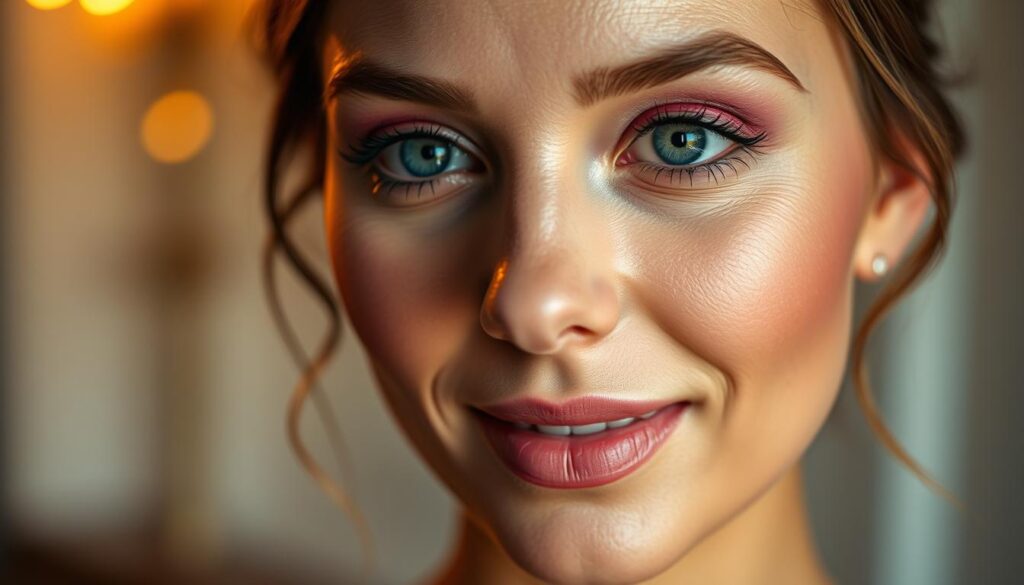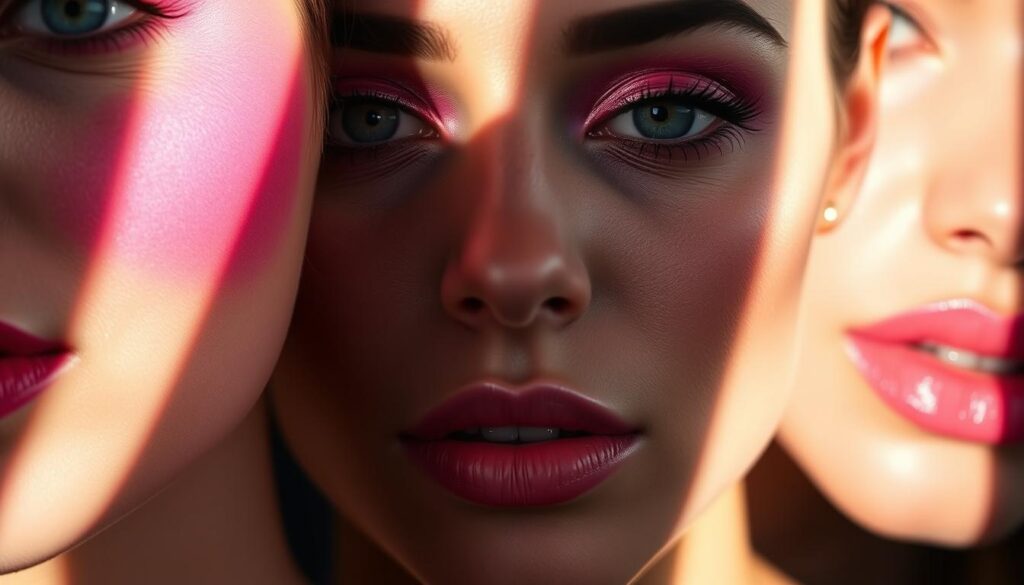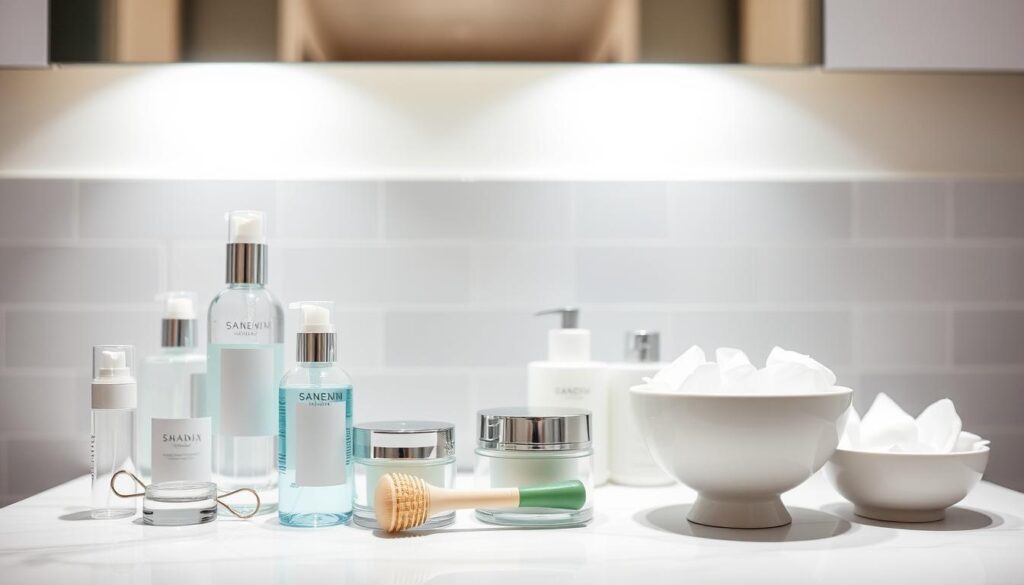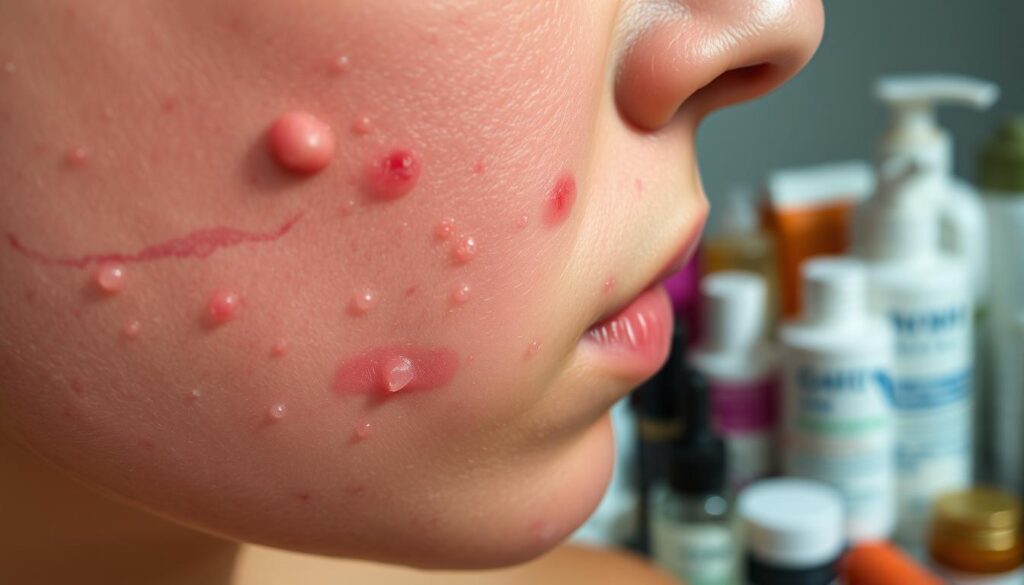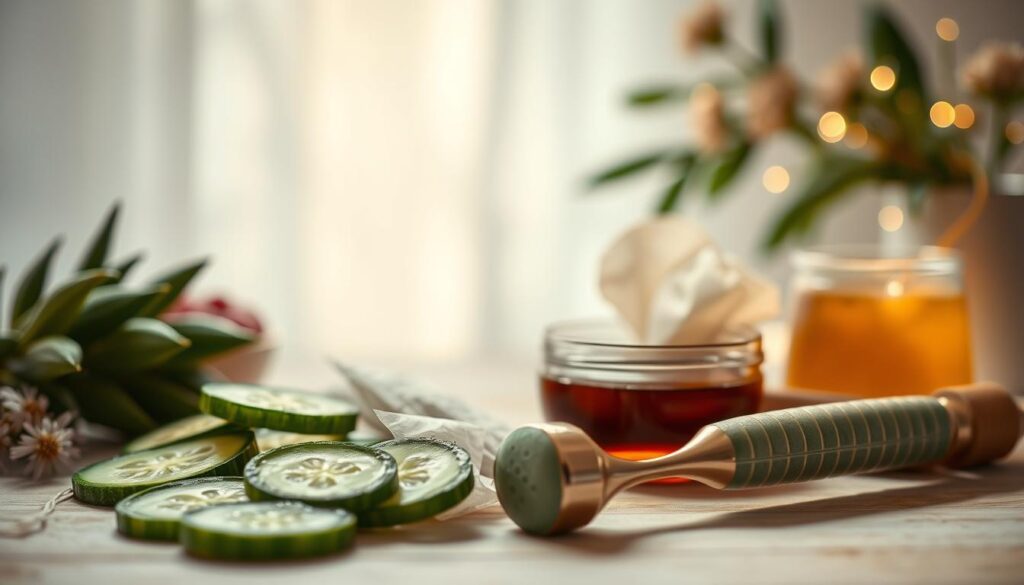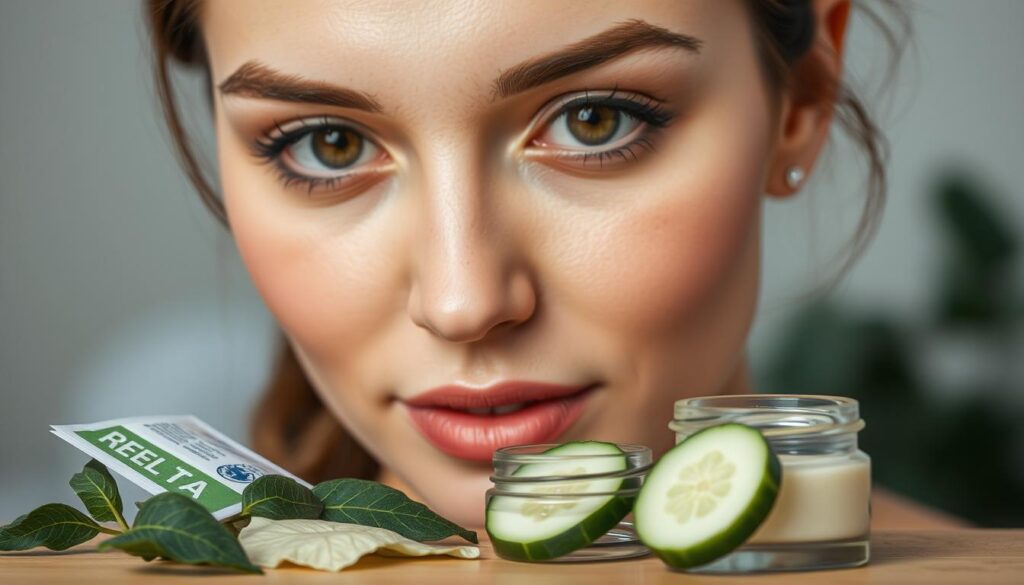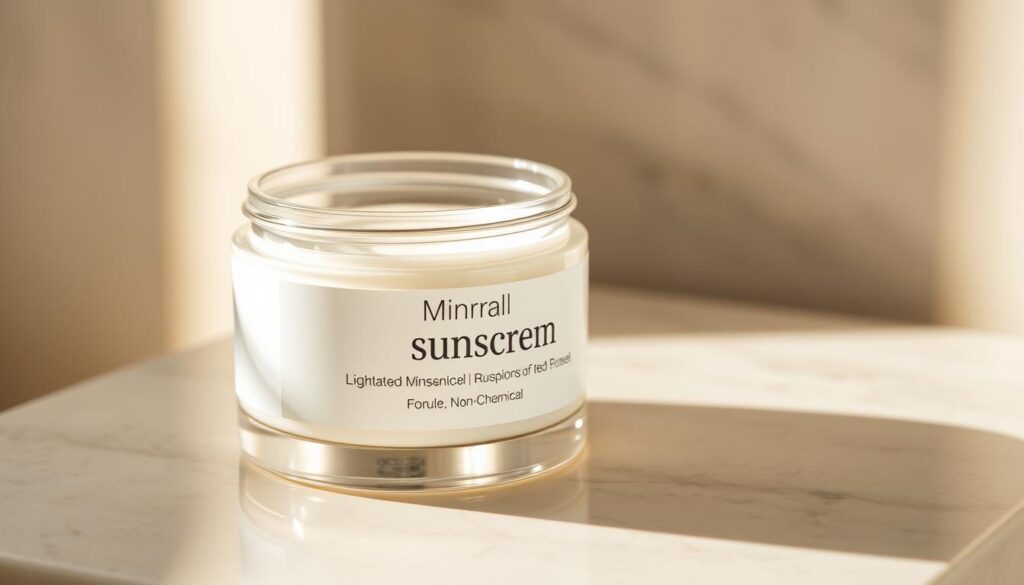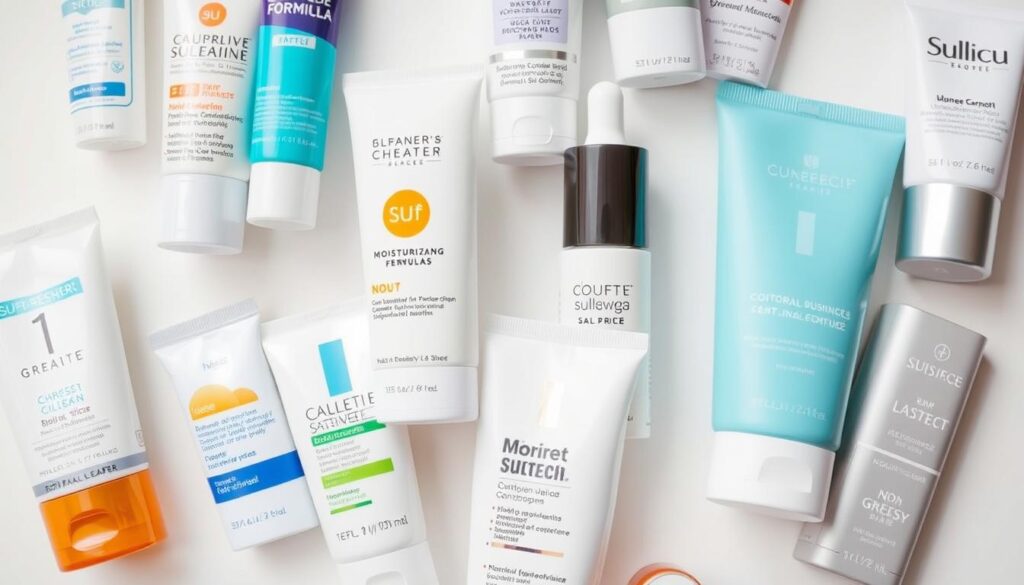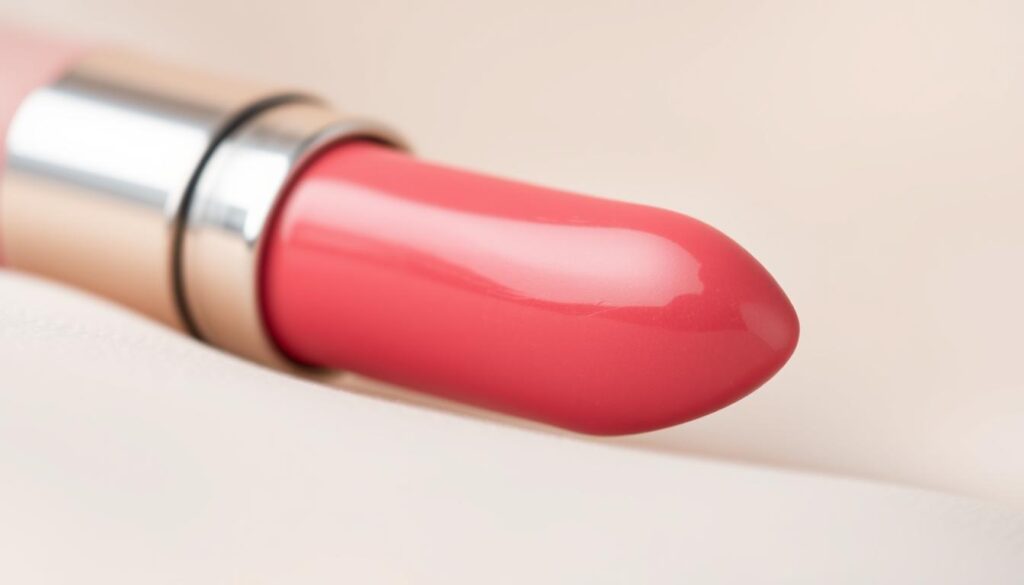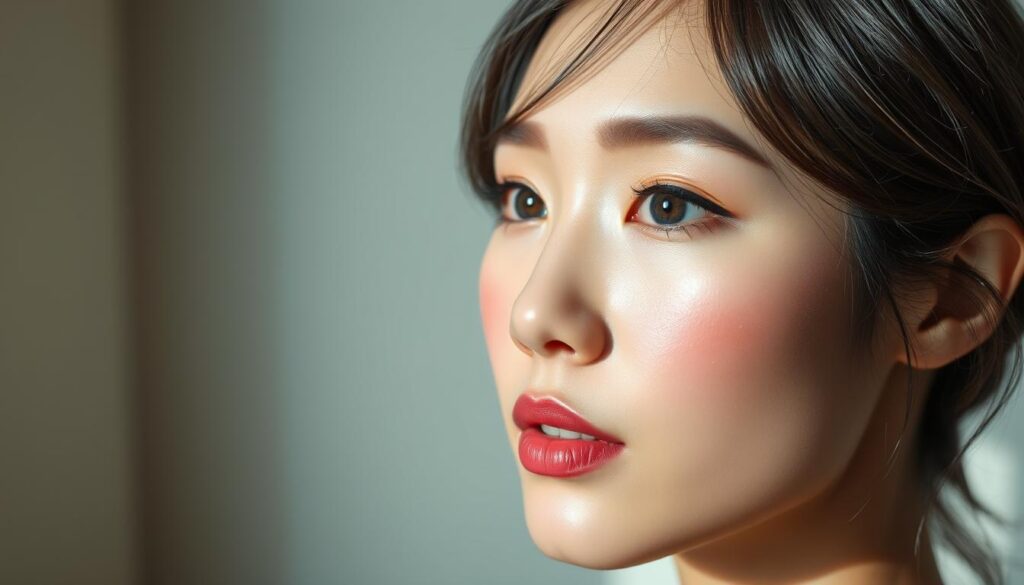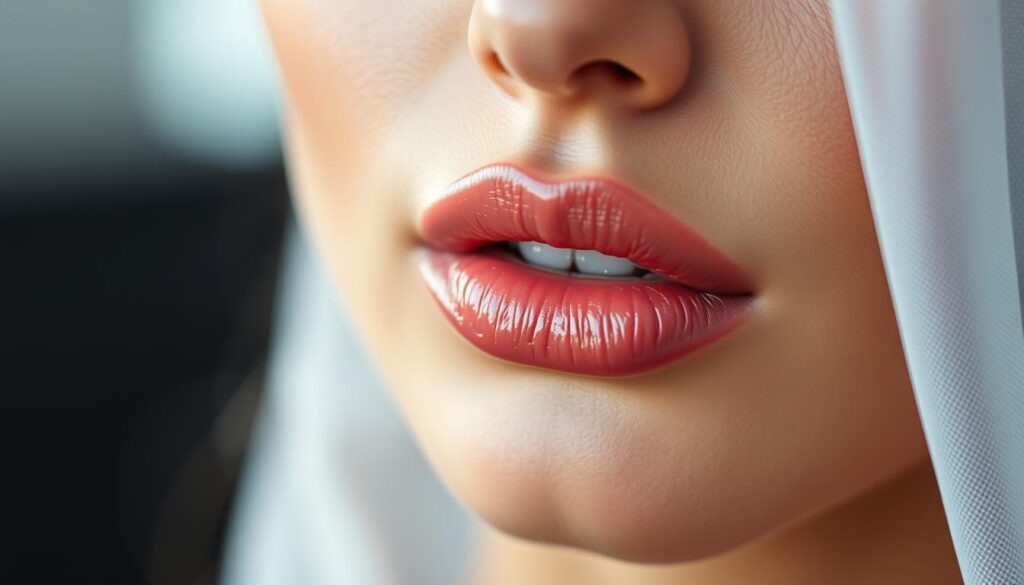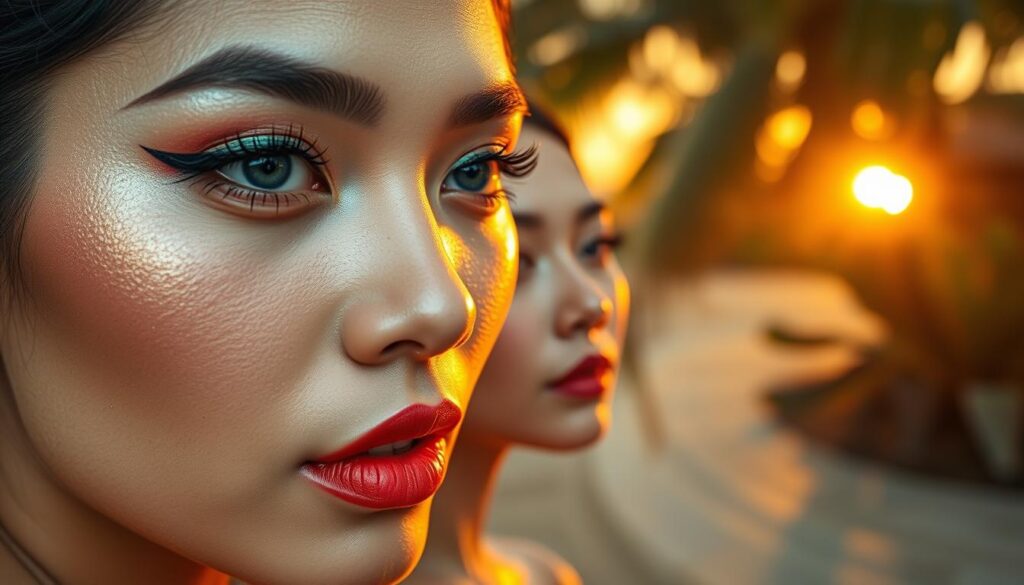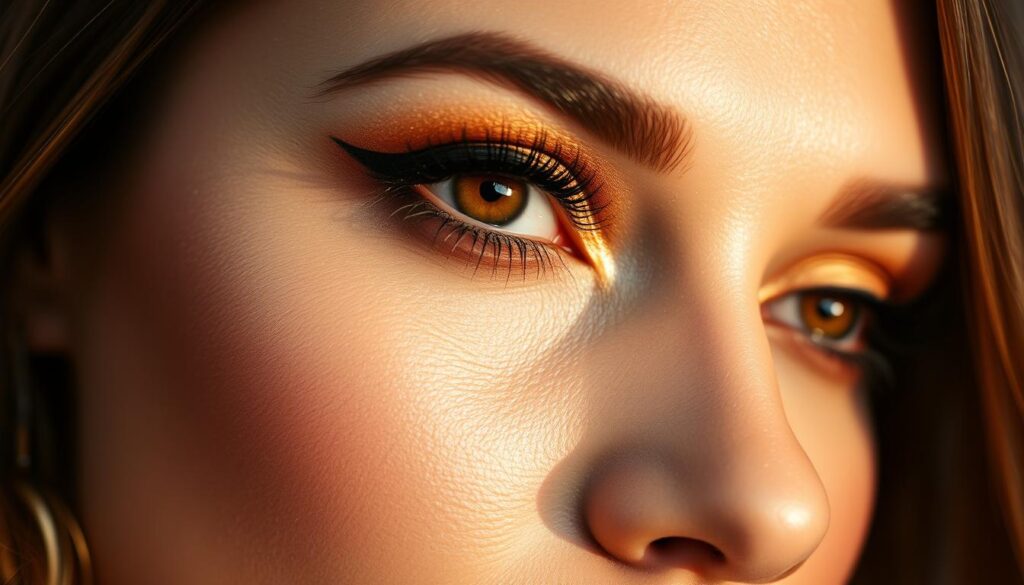If you’re looking for the next big skincare ingredient, look no further than snail mucin benefits—a powerhouse known for hydration, skin repair, and anti-aging.
Snail mucin has become popular for its skin benefits. It helps with hydration, wound healing, and anti-aging. The skincare market values snail mucin at over $770 million by 2025. This shows how much the industry believes in its benefits.
Many people now include snail mucin in their skincare routines. It’s full of nutrients like glycoproteins, hyaluronic acid, and glycolic acid. These help improve skin health and address many skin issues, making it a natural choice.
Key Takeaways
- Snail mucin has potential benefits for skin health, including hydration, wound healing, and anti-aging properties.
- The global market value for snail mucus in skincare products is projected to approach $770 million by 2025.
- Snail mucin is rich in glycoproteins, hyaluronic acid, and glycolic acid, making it an effective ingredient for improving skin health.
- Snail mucin can stimulate collagen production, aiding in reducing fine lines and wrinkles.
- Consistent use of snail mucin can lead to visible skin improvements within a few weeks, particularly in moisture levels and texture.
- Snail mucin is a natural ingredient that can be used to address various skin concerns, including dryness, acne, and rosacea.
- Snail mucin products are available in various concentrations and formulations, with prices ranging from $13.99 to $26.50.
What is Snail Mucin and Its Origins in Skincare
Snail mucin is a natural substance from snails. It’s rich in hyaluronic acid, glycoproteins, and antioxidants. These nutrients help keep the skin healthy, hydrated, and regenerating. This makes snail mucin a popular choice in skincare.
Snail mucin has been used for centuries in traditional Chinese medicine. It was also valued by the Egyptians and Greeks for its skincare benefits. Today, the K-beauty market has made snail mucin even more popular, with many products featuring it.
Some of the key benefits of snail mucin in skincare include:
- Hydration and moisturization
- Anti-aging and skin regeneration
- Antimicrobial and antibacterial properties
- Improved skin elasticity and firmness
Snail mucin is now a key ingredient in many skincare products. Its popularity is expected to grow as more research shows its benefits. It’s becoming a major player in the skincare industry.
| Product | Concentration of Snail Mucin | Benefits |
|---|---|---|
| CosRX Advanced Snail 96 Mucin Power Essence | 96% | Hydration, anti-aging, skin regeneration |
| Avon’s Beyond Glow Snail Mucin Complex + Niacinamide Serum | 10% | Improved skin tone, reduced discolorations, softer appearance of fine lines |
The Rise of Snail Mucin in Modern Skincare
Snail mucin has become a key part of modern skincare. It’s loved for its natural and sustainable benefits. It keeps the skin hydrated and fights aging. Regular use of snail mucin makes the skin look better, with less wrinkles and a firmer feel.
The interest in snail mucin grew after Mizon introduced the Snail Repair Cream in 2011. Since then, it’s become a favorite worldwide. Many brands now include it in their products. Snail mucin offers several benefits, such as:
- Rich in humectants like glycosaminoglycans, which attract and bind moisture
- Allantoin, peptides, and growth factors help heal and boost collagen
- Natural anti-inflammatory agents soothe sensitive skin, like rosacea and eczema
The demand for snail mucin is rising fast. It’s expected to reach a market value of $770 million by 2025. Its natural benefits and effectiveness make it a top choice in skincare trends.
| Benefits of Snail Mucin | Description |
|---|---|
| Hydration | Provides long-lasting hydration and moisture attraction |
| Anti-aging | Helps reduce fine lines and wrinkles, improving skin texture |
| Soothing | Provides natural anti-inflammatory agents for sensitive skin conditions |
Key Components of Snail Mucin
Snail mucin is made up of many nutrients that help the skin stay healthy. It includes glycoproteins, hyaluronic acid, peptides, and antimicrobial properties. These work together to keep the skin hydrated, boost collagen, and shield it from harm.
The parts of snail mucin, like glycoproteins and hyaluronic acid, are key for healthy skin. Glycoproteins help make collagen and grow new cells. Hyaluronic acid keeps the skin moist for a long time. Together, they make snail mucin a great choice for skincare.
Glycoproteins and Growth Factors
Glycoproteins and growth factors in snail mucin boost collagen and cell growth. This makes the skin more elastic and less wrinkled.
Hyaluronic Acid Content
Hyaluronic acid is a big part of snail mucin. It keeps the skin moist for a long time. This makes the skin feel soft and smooth.
Snail mucin also has peptides and antimicrobial properties. These help reduce wrinkles and protect the skin from damage.
Snail Mucin: A Game-Changer for Your Skin – Benefits of Snail Mucin in Skin
Snail mucin is known for its many benefits in skincare. It helps with hydration, wound healing, and fighting aging. Its natural and sustainable qualities make it great for long-lasting hydration and anti-aging.
It’s packed with hyaluronic acid, which keeps skin moist and soft. This makes it a key player in skincare.
Some of the key snail mucin benefits for skin health include:
- Improved skin texture and hydration
- Reduced appearance of fine lines and wrinkles
- Enhanced collagen production
- Soothing and calming properties for sensitive skin
Products like the Cosrx Snail Mucin 96% Power Repairing Essence use snail mucin. They help with collagen production and hydration. This makes snail mucin a game-changer for skin health.
Snail mucin products are becoming more popular. It’s clear that this ingredient is here to stay. It’s great for improving skin texture, reducing wrinkles, and hydrating skin.
| Product | Snail Mucin Concentration | Benefits |
|---|---|---|
| Cosrx Snail Mucin 96% Power Repairing Essence | 96% | Hydration, anti-aging, improved skin texture |
| Mizon Snail Repair Perfect Cream | 92% | Hydration, soothing, calming properties |
How Snail Mucin Transforms Aging Skin
Snail mucin deeply impacts aging skin, boosting collagen and reducing wrinkles. Its glycoproteins and growth factors work together. They enhance collagen production, which smooths out fine lines and wrinkles, making the skin look younger.
Snail mucin also improves skin elasticity. This is thanks to its hyaluronic acid, which hydrates the skin for a long time. As we age, our skin makes less collagen and elastin, losing elasticity. Snail mucin helps restore this, making the skin look smoother and more radiant.
Snail mucin is not just for anti-aging; it also has anti-inflammatory properties. This makes it great for reducing redness and irritation. It’s perfect for those with sensitive or acne-prone skin. Its ability to boost collagen, reduce wrinkles, and improve elasticity makes snail mucin a strong ally against aging skin.
Some of the key benefits of snail mucin include:
- Stimulating collagen production to reduce fine lines and wrinkles
- Improving skin elasticity and firmness
- Providing long-lasting hydration to leave the skin looking smooth and radiant
Addressing Common Skin Concerns with Snail Mucin
Snail mucin is becoming more popular in skincare. It helps with acne, aging skin, and hyperpigmentation. Its antimicrobial properties fight acne and prevent future breakouts. It also hydrates the skin, making it more elastic and firm.
Snail mucin offers several benefits for the skin. It:
- Reduces inflammation and redness from acne
- Improves skin elasticity and firmness, reducing fine lines and wrinkles
- Provides long-lasting hydration to dry and dehydrated skin
Many skincare products include snail mucin, with concentrations from 92% to 96%. These products help with various skin issues, like acne, aging, hyperpigmentation, and dryness. Snail mucin is known for its natural and gentle benefits, making it a favorite in skincare.
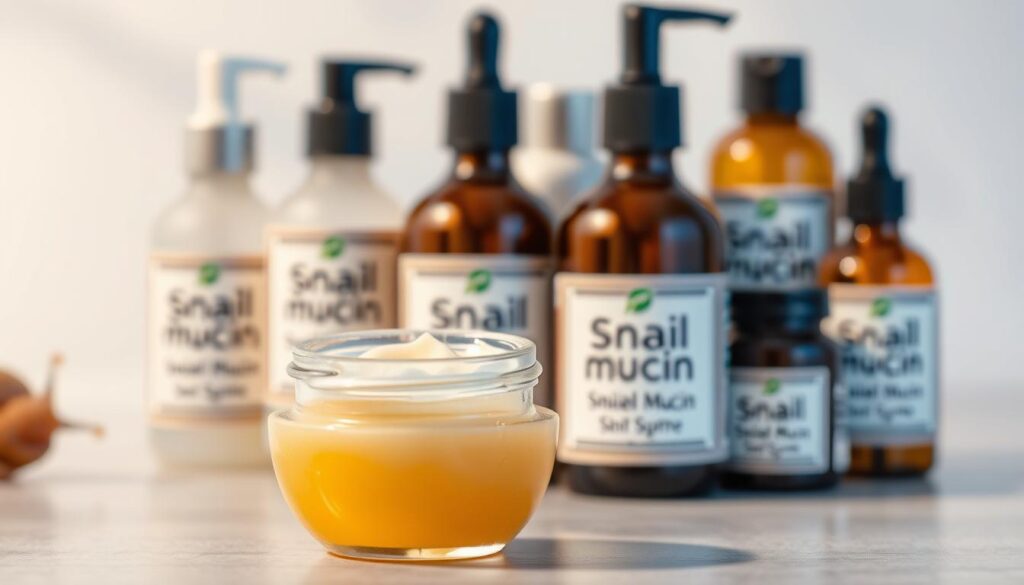
Snail mucin is a versatile and effective ingredient for many skin concerns. It’s great for acne-prone skin due to its antimicrobial and hydrating properties. It’s also popular for anti-aging routines because it improves skin elasticity and firmness.
| Product | Concentration of Snail Mucin | Key Benefits |
|---|---|---|
| COSRX Advanced Snail 92 All in One Cream | 92% | Hydrates and nourishes the skin, reduces acne and inflammation |
| COSRX Advanced Snail 96 Mucin Power Essence | 96% | Provides long-lasting hydration, improves skin elasticity and firmness |
Incorporating Snail Mucin into Your Skincare Routine
Adding snail mucin to your skincare routine depends on your skin needs. You can use it in the morning or at night. For example, applying it at night can help with fine lines and wrinkles.
Snail mucin works well with other products like moisturizers and serums. This is called product layering. It helps keep your skin moist and strong. Products like the Cosrx Snail Mucin 96% Power Repairing Essence and the Mizon Snail Repair Perfect Cream are great examples.
Use snail mucin 1-2 times a day for best results. You can also mix it with sheet masks and ampoules. Adding snail mucin to your routine can improve your skin’s texture and hydration.
Morning vs Night Application
Choose when to apply snail mucin based on your skin. If you have dry or sensitive skin, use it at night. It helps keep moisture in and supports your skin’s barrier.
Layering with Other Products
Snail mucin pairs well with moisturizers and serums. Layering it with these products helps keep your skin moist and strong. This leaves your skin looking and feeling great.
Frequency of Use
For the best results, use snail mucin 1-2 times a day. You can also mix it with sheet masks and ampoules. This combination can give you the best skin care results.
Choosing the Right Snail Mucin Products
When picking snail mucin products, several factors matter. The concentration of snail mucin is key. For example, the Cosrx Snail Mucin 96% Power Repairing Essence has a high percentage. Also, look at the product’s quality, like hyaluronic acid and antimicrobial properties.
Some top snail mucin products include the Cosrx Snail Mucin 96% Power Repairing Essence and the Mizon Snail Repair Perfect Cream. When picking, think about these:
- Concentration levels: Find products with snail mucin at 96% or higher.
- Quality indicators: Check for hyaluronic acid and antimicrobial properties.
- Brand reputation: Go for well-known brands like Cosrx or Mizon.
By focusing on these points and picking a quality snail mucin product, you can enjoy its benefits. These include better skin elasticity, fewer fine lines and wrinkles, and more hydration.
| Product | Concentration Level | Size |
|---|---|---|
| Cosrx Snail Mucin 96% Power Repairing Essence | 96% | 1.35 oz |
| Mizon Snail Repair Perfect Cream | 92% | 1.69 oz |
Potential Side Effects and Precautions
It’s important to know about side effects and precautions when using snail mucin products. Snail mucin is usually safe and works well, but some people might get skin irritation or allergic reactions. To avoid these issues, do a patch test before using it on your face.
Dermatologists say 5-10% of people might get sensitive, and side effects are mostly mild. Only about 2% of users have serious reactions. Always follow the product’s instructions and start with a little to see how your skin reacts.
Here are some important precautions to remember when using snail mucin products:
- Do a patch test before regular use
- Start with a small amount to see how your skin reacts
- Avoid using it on broken or irritated skin
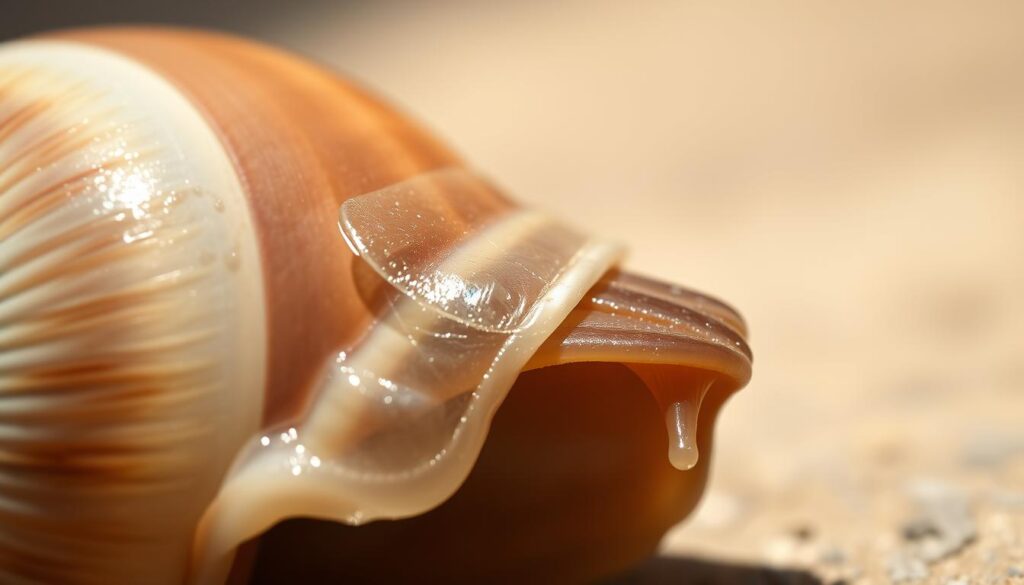
By following these precautions and knowing about possible side effects, you can safely use snail mucin. This way, you can enjoy its many benefits for your skin’s health.
Ethical Sourcing and Sustainability
The demand for snail mucin is rising fast. It’s important to think about how it affects the environment and the snails. Ethical sourcing and sustainability are key in the snail mucin world. They make sure snails are treated right during collection.
Many companies are now using kinder ways to get snail mucin. This helps animals and makes skincare better for our planet. It’s a big step towards a greener future.
Some businesses are finding green ways to get snail mucin. They use clean energy, save water, and recycle. By picking products that care about the planet, we help the skincare world be better.
When you’re looking for snail mucin products, keep these tips in mind:
- Find products that don’t hurt animals during collection
- Go for items with little packaging and stuff you can recycle
- Support companies that care about the planet
By choosing wisely, we help make the snail mucin industry better. We also get to enjoy its natural and helpful skincare benefits.
Common Myths and Misconceptions About Snail Mucin
Snail mucin is becoming more popular in skincare. But, myths and misconceptions have popped up. One myth is that it’s slimy or hard to use. But, it’s actually light and doesn’t leave a greasy feel.
Another myth is that it only works for certain skin types. But, snail mucin can help many skin issues. It improves skin texture, elasticity, and hydration. This makes it good for many skincare needs.
Some common myths and misconceptions about snail mucin include:
- It is only suitable for certain skin types
- It is slimy or uncomfortable to use
- It is not effective for anti-aging concerns
These myths can be proven wrong by looking at science and what people say. They show snail mucin is good for many skincare needs.
In conclusion, snail mucin is a great skincare ingredient. Knowing the myths helps people make better choices for their skin.
| Myth | Reality |
|---|---|
| Snail mucin is slimy or uncomfortable to use | Snail mucin is a lightweight and non-greasy substance that can be easily absorbed into the skin |
| Snail mucin is only effective for certain skin types | Snail mucin can be beneficial for a wide range of skin concerns and types |
Conclusion: Embracing Snail Mucin for Better Skin Health
Snail mucin is a powerful ally for healthier, more radiant skin. It comes from snail secretions and offers many benefits. It boosts collagen, reduces fine lines, and changes how we care for our skin.
It works well for all skin types, including dry, oily, and sensitive. Snail mucin hydrates, soothes, and gives a youthful glow. It also fights acne with its antimicrobial and oil-regulating properties. Using snail mucin can make your skin look and feel amazing.
Starting your skin health journey with snail mucin is a smart choice. It’s backed by science and can make a big difference. Choose quality skincare with snail mucin for the best results. It’s the key to a brighter, more youthful look.
FAQ
What is snail mucin and how does it benefit the skin?
Snail mucin, also known as snail slime, is a natural substance from snails. It’s full of nutrients like glycoproteins, hyaluronic acid, and peptides. These help keep the skin hydrated, heal wounds, and fight aging.
How does snail mucin transform aging skin?
Snail mucin boosts collagen, reduces wrinkles, and makes skin more elastic. The glycoproteins and growth factors in it stimulate collagen. Hyaluronic acid in it keeps the skin hydrated, making it firmer and more supple.
Can snail mucin address common skin concerns like acne and hyperpigmentation?
Yes, snail mucin is good for many skin issues. It has antimicrobial properties that fight acne and prevent future breakouts. It also hydrates and fights aging, which can help with hyperpigmentation and uneven skin tone.
How should snail mucin be incorporated into a skincare routine?
You can use snail mucin in the morning or at night, based on your skin’s needs. It works well with moisturizers and serums to boost its effects. Use it 1-2 times a day, depending on your skin.
What should I look for when choosing snail mucin products?
Look for snail mucin products with high concentration levels and quality indicators like hyaluronic acid and antimicrobial properties. Choose products that are cruelty-free and eco-friendly.
Are there any potential side effects or precautions to be aware of with snail mucin?
Snail mucin is usually safe and effective. But, some might get skin irritation or allergic reactions. Always do a patch test before adding it to your routine.
Are there any common myths or misconceptions about snail mucin?
Some think snail mucin is slimy or uncomfortable, but it’s actually lightweight and non-greasy. It absorbs easily into the skin. Another myth is that it only works for certain skin types, but it can help many skin concerns and types.
